We have lots of lovely plants to show off this week! Here is a little show and tell.
Peek into the Plants, Week of April 10th, 2017
We have lots of lovely plants to show off this week! Here is a little show and tell.
We have lots of lovely plants to show off this week! Here is a little show and tell.
I recently spent 9 days in France, visiting family. Highlights of the trip - eating cheese and visiting some beautiful grocery stores. My sister lives in Haute Savoie, which is a region tucked between Lac Lehman (the lake that separates parts of France and Switzerland) and the French Alps. It is a beautiful place, a little like Vermont in that there are mountains and a lake, but the mountains are huge and breath taking, dominating every cloudless day with punctuation marks on the horizon that command attention.
My brother-in-law, sister and niece are opening a cozy little restaurant in their town of Thonon-les-Bains, and I had a chance to visit the week before they officially open. Running restaurant-related errands sent us to some gorgeous grocery stores and I just have to share a few pictures with you. Produce, in France, is treated like semi-precious stones. Vegetables are grown with strict standards, they are handled carefully during harvest and post-harvest wash, and are displayed lovingly. I found some inspiration here, and it will make the winter that much shorter.

Onions are some of the first things to go in the ground each spring. You may not know this, but onions are finely tuned creatures with a rigid hormonal profile. They are completely and utterly dependent on the sun's cycle to grow into the lovely round orbs we think of as onions. Those plump layers only grow in relationship to the lengthening days of spring. If onions are planted too late, they will never bulb out and become big and round. An onion that has been planted too late, let's say after the middle of May, will never quite size up, but will create a thick stem, and a barely bulbous orb. The engorged stem will not create rounded layers at all but rather look more like a slightly ovate leek. These are still fine to eat, but won't really be onions you can store through the winter.
We recommend that people plant onions in mid-April. When it is muddy, and cold, and you think there is no way a plant wants to go into the garden, well guess what? The onions really want to go into that cold earth. The way we grow onion plants for sale is that we seed about 80 plants into a 4 pack, and your job as the gardener is simple:
The onions plants won't grow much at first, but they are just hanging out in the cold soil, programming themselves to grow once the soil warms up. It is these cold, long days that help make onions nice. I know, it is hard to believe that they prefer this, but they do. Southern growers, who have shorter summer days than northern growers, have entirely different onion varieties than we do. That illustrates just how much onions are day-length sensitive. A few degrees difference in latitude necessitates a whole different set of genetics.
The other things to keep in mind with onions:
Onions are best stored in a dark, cool, airy place. A damp basement is not a good storage spot. A cold, dry, dark attic is better. Or an unheated closet, or a garage that does not get too cold. Ideal onion storing temperature is about 35F. That is pretty cold - colder than most basements.
Some onion relatives can be planted later in the season. This includes scallions, mini-purplette onions, pearl onions, and shallots. Leeks are also tolerant of a later planting, and can be planted multiple times throughout the gardening season if you would like to harvest baby leeks.
The onion varieties we grow each year:
Cipollini Gold Coin - a flat, disc like onion that stores very well in the winter. It is a strong flavored onion which mellows when cooked and is delicious caramelized, glazed, or roasted. One of our favorites for flavor.
Yellow Storage Cortland - a huge, good keeper which means that it stores well all winter. Dry the onion once harvested in a cool, airy spot, and you will be eating it until March or April of next year.
Red Storage Onion Mars - also quite big, and also a good winter keeper. Slightly milder in flavor than Cortland and can be eaten raw when sliced thinly. Red Onions develop their red interior only once they have been cured. Once harvested, coll in an airy dark spot until the tops are completely dried and can be pulled off by hand. That is the curing process for all storage onions.
Sweet Onion Walla Walla and Ailsa Craig - both are gigantic sweet onions. They do very well with lots of water and mulch. Sweet onions do not keep over the winter. They do not need to be cured, but rather get refrigerated once harvested. They are delicious roasted, grilled, or eaten raw in sandwiches.
Scallions - These can be planted in clumps of 10 or so plants. They can be planted every few weeks for a continuous harvest. If you do not want to buy scallion plants or seeds, you can eat young onion plants as scallions.
Shallots - These store very well after being cured like onions. They add a sweet and complex flavor to winter dishes, marinades, and dressings.
Mini-purplette - these are lovely purple pearl onions that are delicious in a spring braise with salad turnips and peas. They can be planted in clumps of 4 to 6 plants and can be planted multiple times throughout the season for more than one harvest. They also make great pickles. About 1" to 2" across.
Here are some past blog posts about tomatoes...the time has come to pick out tomatoes, and in warm areas, you can start planting. Hurray!
We are loaded with great gift ideas for Mothers' Day this year. We have added so many new succulents, sempervivum and sedums that make great planters, houseplants or can be added to the landscape. Succulents are generally grown in containers in our climate, and come in many textures, colors and forms. They can make great houseplants in the winter and love spending the summer outside in a pot. Sempervivum are also known as hens and chicks....they are those cute rosette shaped plants that grow in rock gardens or along stone paths and in patios. We have about 7 kinds of those and it is fun to pick and choose for funky designs. And we have about 12 kinds of sedums this year. These come in a vast array of sizes and shapes from little 2 inch tall rock garden plants to huge 3 foot tall perennials that make a statement in the garden May through November. For the mom who wants to homestead or grow more of the family's food, we have berry patches and fruit orchards waiting to happen - peach, pear, plum trees; raspberry plants that produce in summer and fall; 8 kinds of blueberries; blackberries; hazelnuts; hops; grapes; currants; and gooseberries. And strawberries too, including a really nice French one called 'Mara des Bois' - it has been bred in France for the past 30 years or so to have extraordinarily sweet and fragrant strawberry flavor. It produces fruit all summer long, and can be grown in a big pot on the deck or in a strawberry patch. We also have strawberries growing in hanging baskets for a fun surprise snack all summer long.
For the mom who likes to be adventurous in the kitchen, we can help put together a delicious selection of herbs that will make cooking easier and full of flavor. We can even recommend a variety of mints (we grow 8 kinds) for making interesting cocktails, teas, or using in desserts.
For the traditional mom, we have lots and lots of lovely hanging baskets that will brighten the entryway and bring a splash of color to the home all summer long. We also have the right fertilizer and plant care tips to keep the plants looking good in the heat and straight through fall.
For the mom without much gardening space, we have really nice cucumbers, zucchini, and tomatoes that are in big 3 gallon pots with a bamboo trellis. With the right compost based fertilizer, they can keep growing and producing all summer long right in their pots on the deck or balcony.
For the choosy mom, we can always provide you with a gift card that will make her happy every time she comes in.
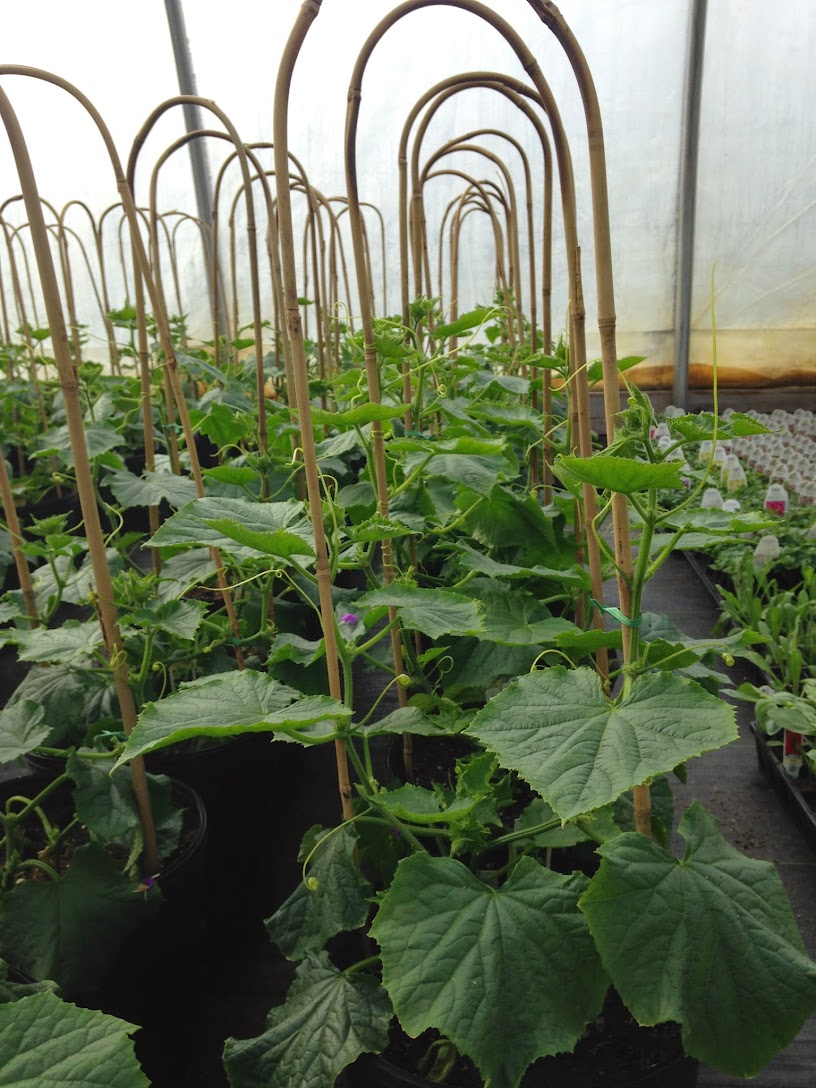
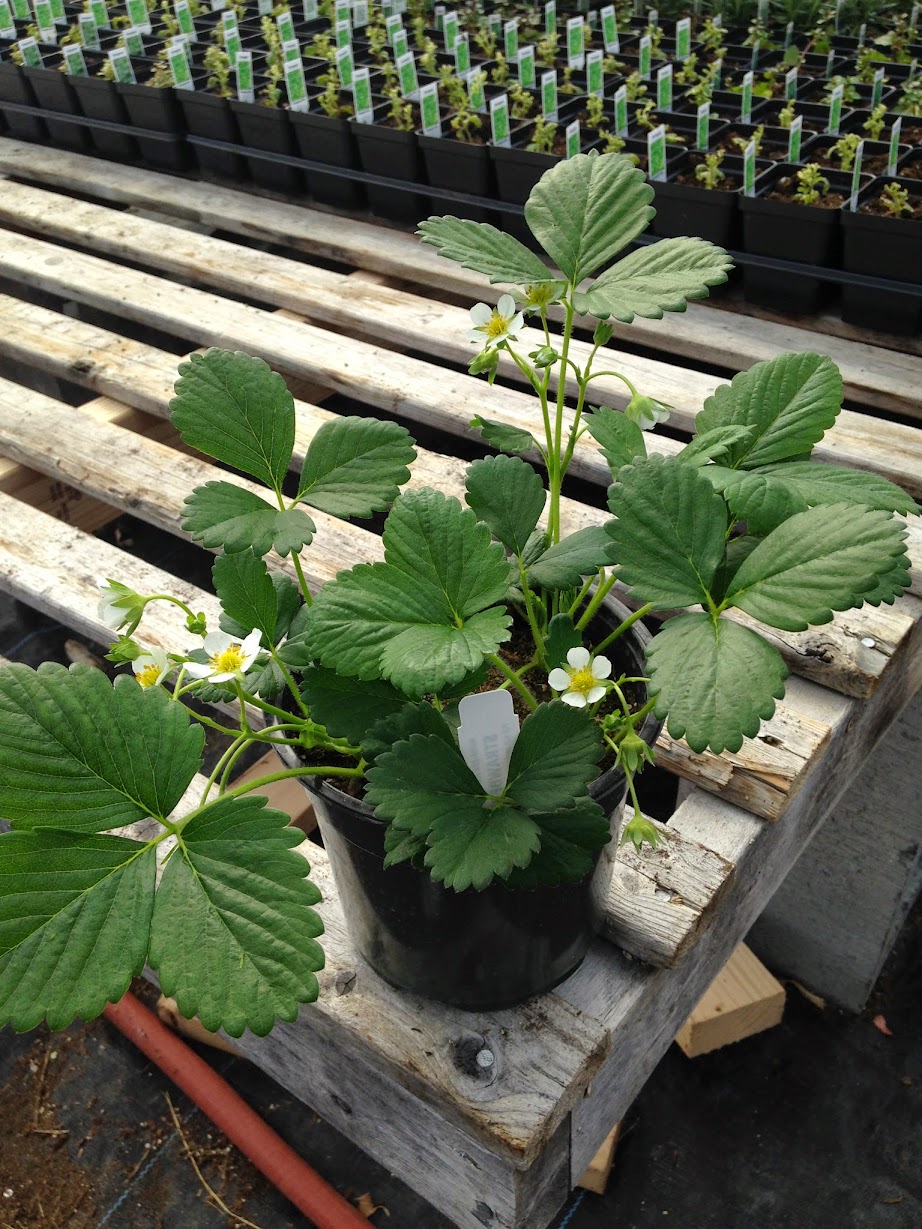
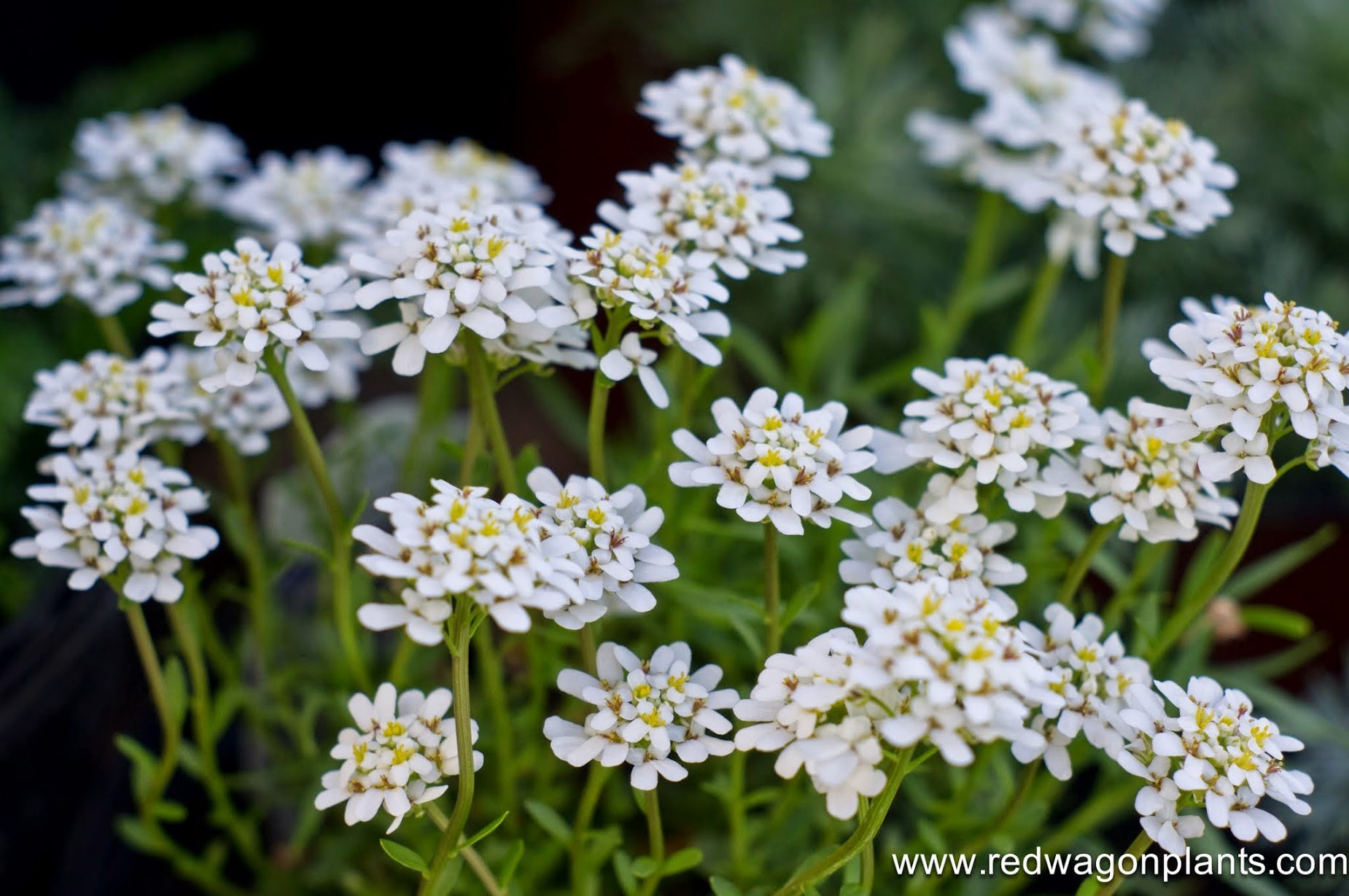
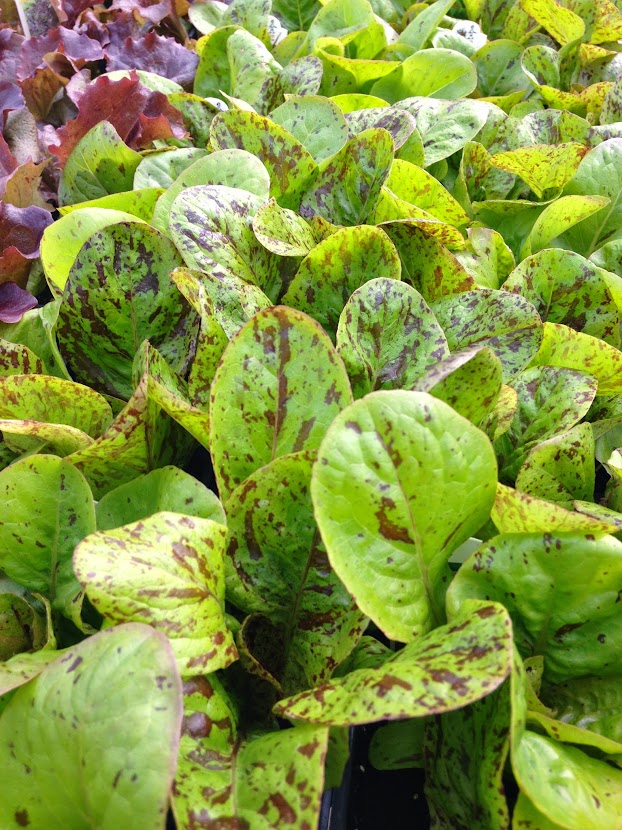
Lettuce 'Forellenschluss'
Marigold, French Bonanza

Catnip 4" Pots

Dusty Miller 'Silver'
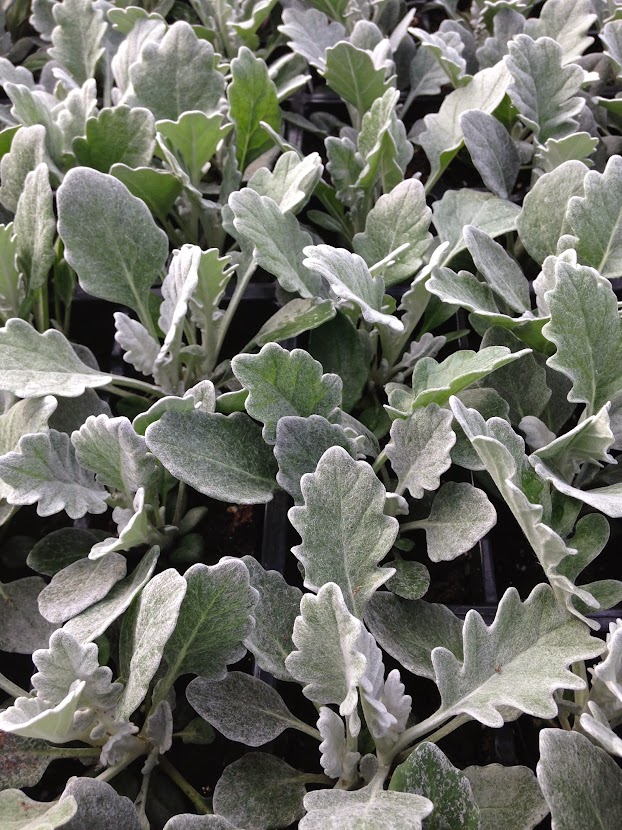
Snapdragon Rocket 4-Packs- Pink, Red, and Yellow
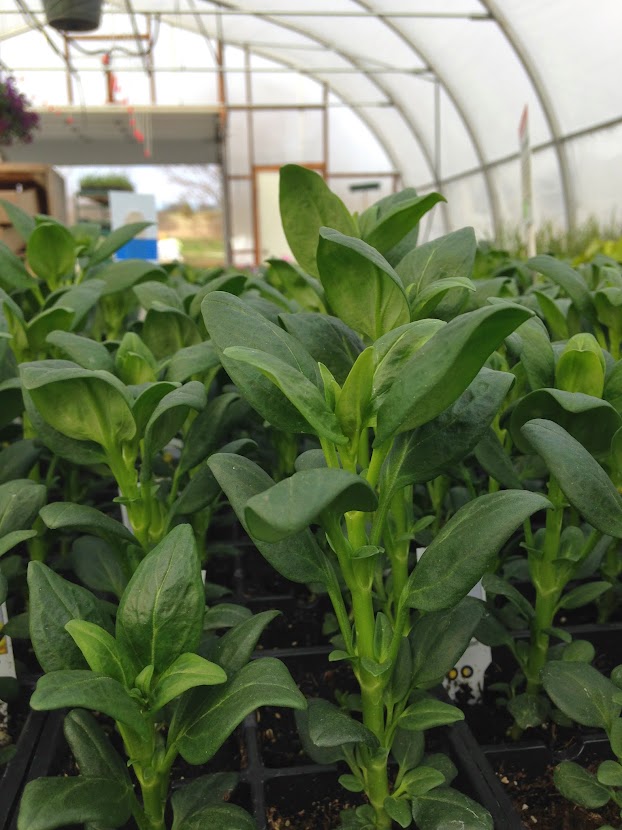
Cosmos 'Sensation Mix' 4 packs
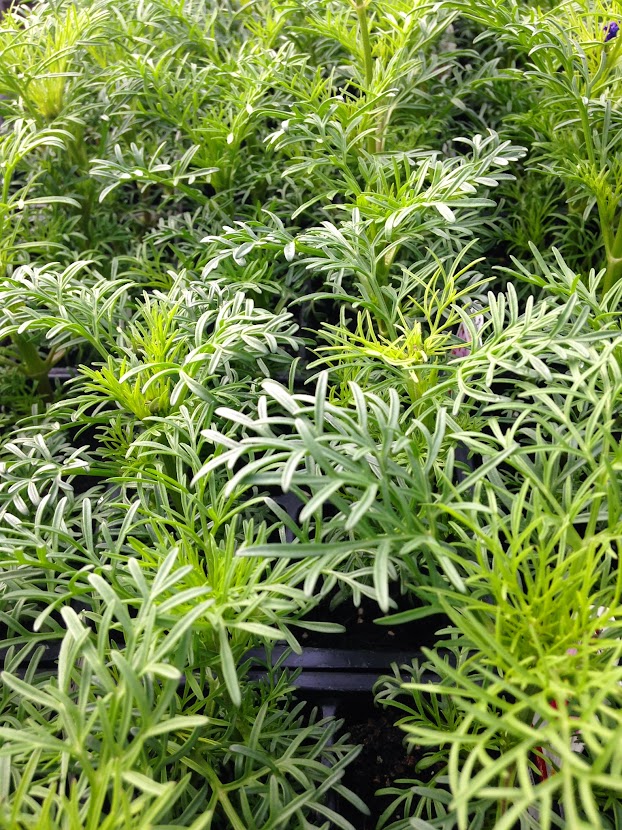
Mara des Bois Strawberry - everbearing French variety that is prized for its outstanding flavor.

Lobelia Regatta Midnight Blue
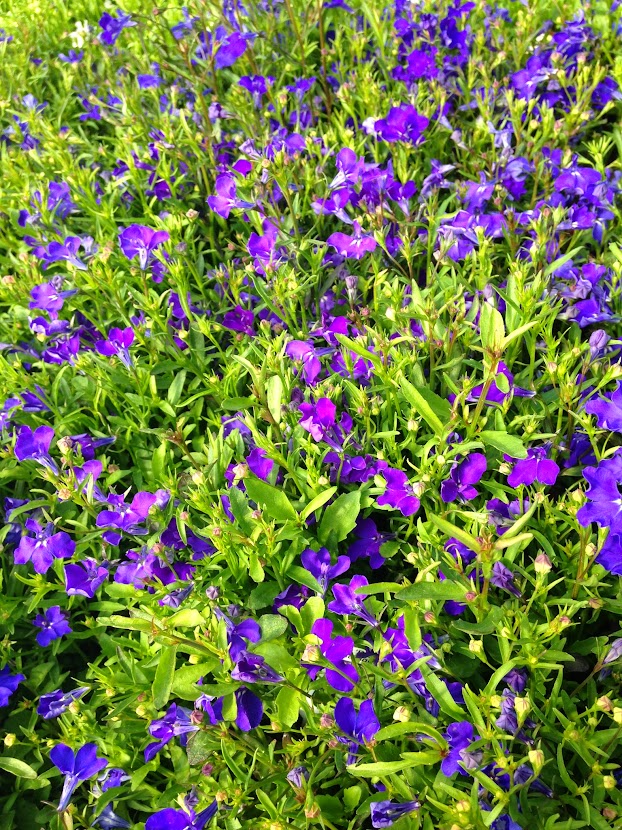
Bidens 'Namid'

Echeveria Holy Gate
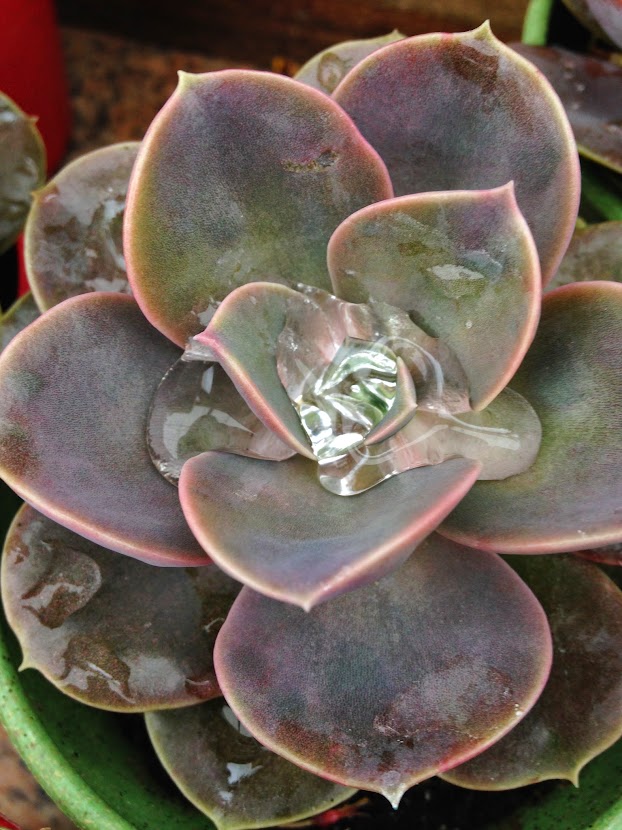
Rose Cascade Ivy Geranium
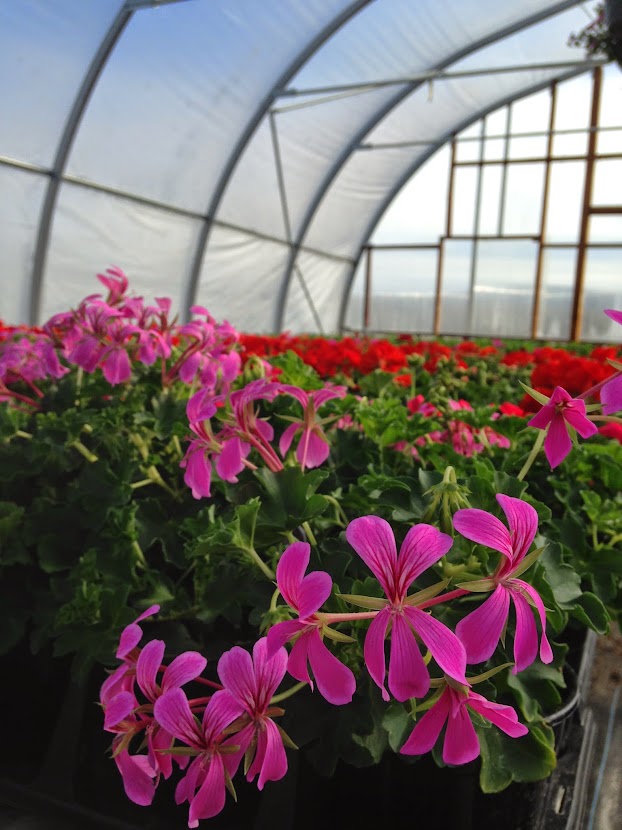
Thai Basil
Patriot Bright Red Zonal Geranium - Blurry picture, but lots of our geraniums are breaking into color like this.
Arugula
Cold Frame with lettuce, chard, onions, kale - everything is hardening off nicely.
Spinach and most of our leafy greens are seeded fresh every week, so they are never old and root bound.

Another cold frame with chard and onions.
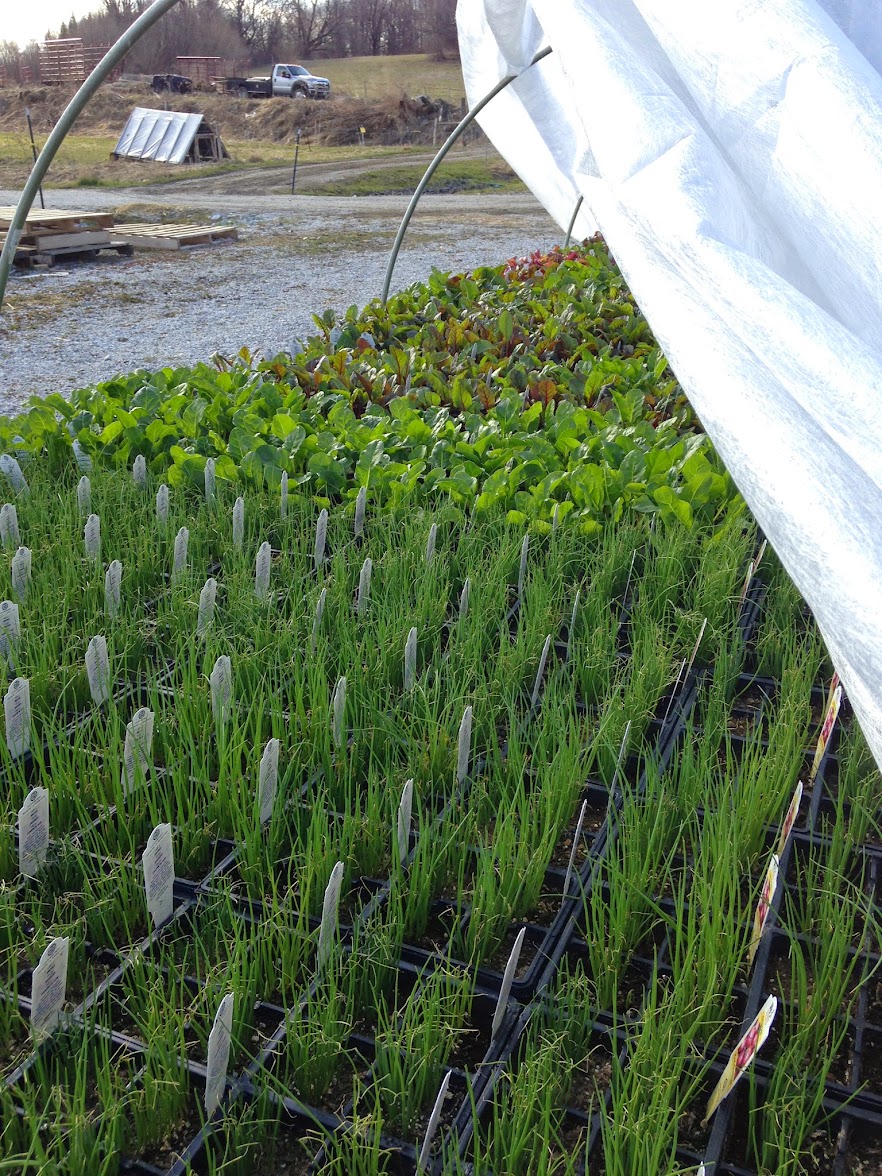
Penny Yellow Viola

Lilac Ice Viola

Sweet Genovese Basil, Nufar.

Mara des Bois Strawberry. This is a French variety that has been bred for maximum flavor. It came out of breenders' greenhouses in the late 90's and came on the market in the USA only in the past few years. It has the most incredibly intense strawberry flavor and is day-neutral, which means it will bear fruit this year, and will continue to do so all summer long. Very hard to find and expensive root stock. We are lucky to be able to grow it out for our customers.

Onions, leeks, shallots, scallions on the cold frame.
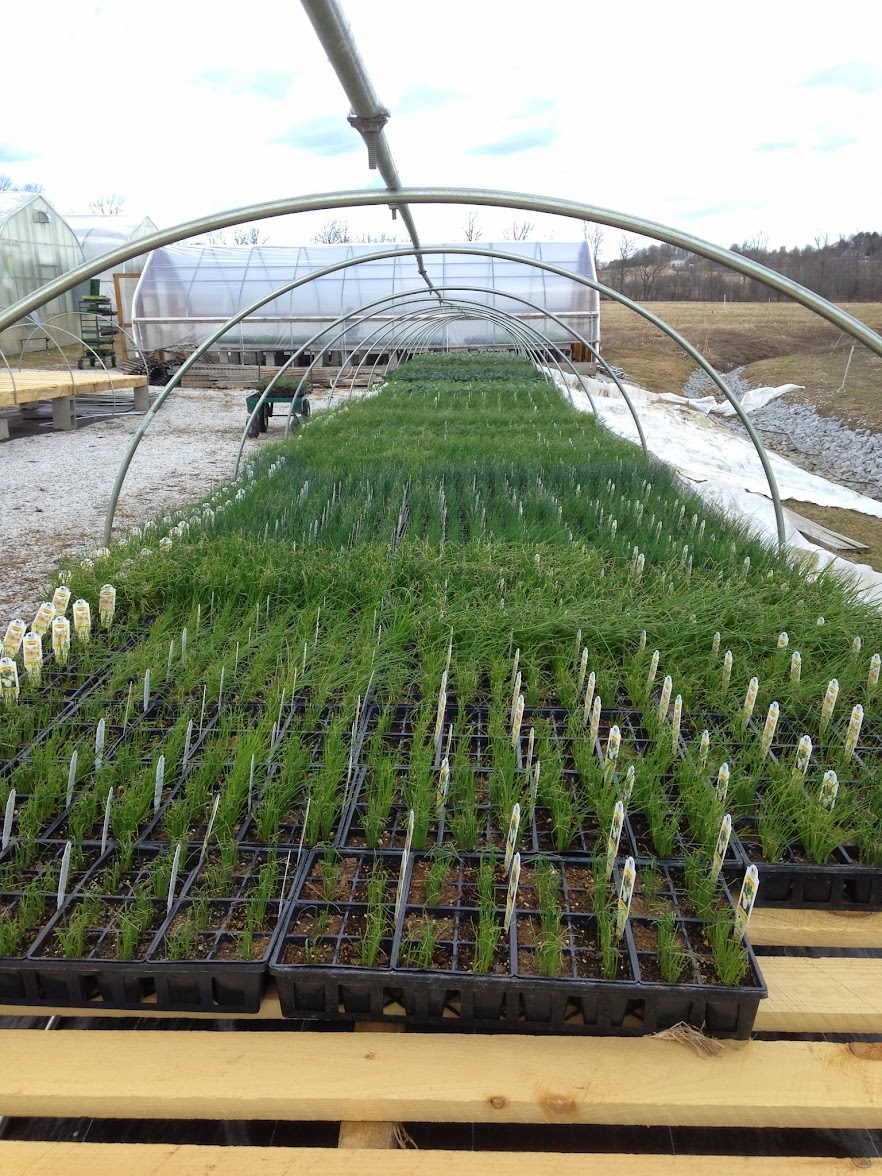
Provence Lavender. Hardy to Zone 5 reliably, but have gotten a few years out of it in Zone 4. Faster to grow then Munstead Lavdender with bigger plants and flowers.
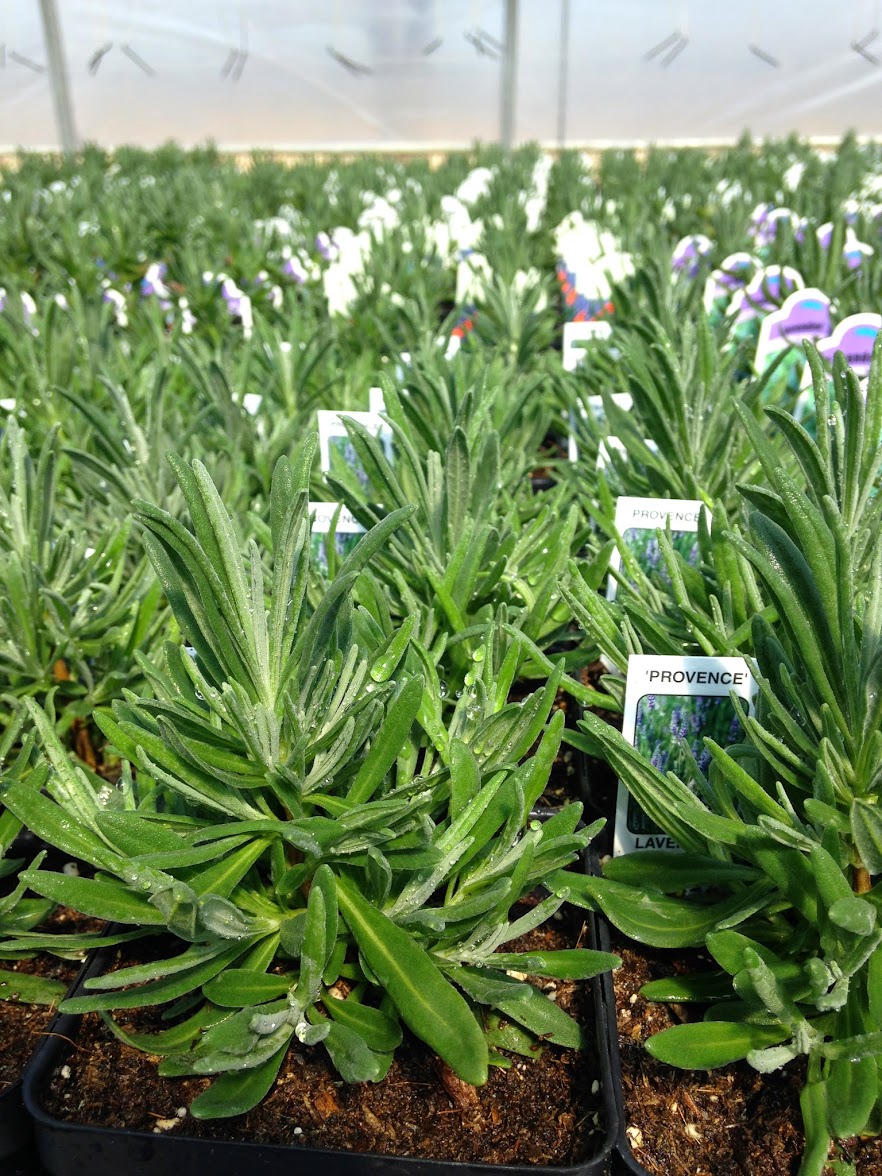
Penny Orange Viola








Our greenhouses start up in February, when we begin the bustle that does not end until the final sales of early September. During that 6 moth period, we are in constant motion, putting in 14 hour days at the beginning of our season for a solid three months and gradually tapering down to a normal 8 to 10 hour day for the remainder of the year. Work moves into the office where I am planning out next year's varieties; we are also busy with greenhouse clean up and putting everything to bed for the winter. When the maples signal that autumn is here, I am ready for a little slowing down. A little time to enjoy the fruits of the garden, to eat those fall greens that quietly draw attention amidst shades of yellow, red, and orange. I finally have time to cook, to preserve some of the bounty with the help of the canning pot, dehydrator, root cellar and freezer.
I tend to be a creature of habit and make more or less the same things each year, because I know my family loves them and because I am not willing to give up precious time and space with experiments that might not work, that might join the sad jars and mystery freezer bags that lay untouched. I do try one or two new things each year, but only after they have been enthusiastically recommended by trusted sources.
Sauerkraut. I use this recipe from Sandor Katz, fermentation guru, author, and person of note who just recently spent some time teaching his craft in Vermont.
Plain and easy, roasted and frozen tomatoes. I wrote about this one last year, and you can read that here. This is the easiest way to make tomatoes that will taste great in a sauce mid-winter. I have more time to cook in the winter, so I don't bother making sauce to freeze or can during the height of summer. But if i have these in the freezer, I can turn them into sauce, soups, add them to braises, etc.

Fancier, slower, seasoned roasted tomatoes. These are a different beast. The tomatoes are slowly roasted, like 8 hours of slow, in a 240F oven with olive oil, garlic, herbs. I sometimes do different batches and label them as such so that they can be used in various dishes during the winter. For example, I make some that are sprinkled with just oregano, or just cumin. But most of them are made with olive oil, thyme, and garlic. And a little sea salt.
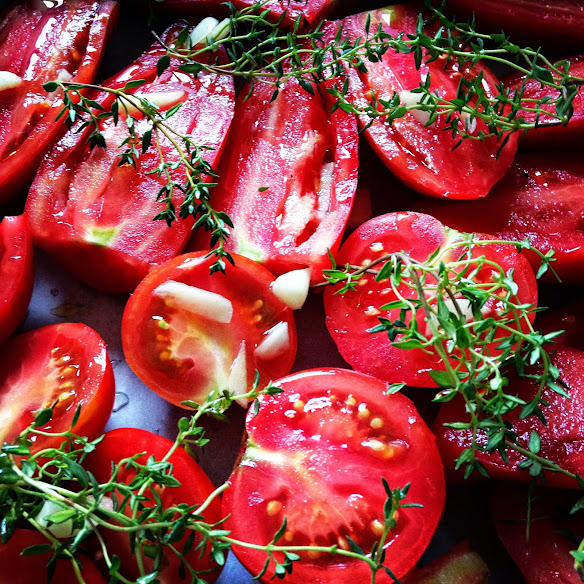
Here are some of the tried and true that show up every year in our winter pantry:
I am always amazed at the resilience of plants. In spite of the most difficult conditions (weeks of drought, weeks of rain, weeks of cold, or all of the above, as we have had this year) some manage to grow green leaves and flowers and fruit even. Although our gardens may be soggy, and some plants luckier than others, a walk into the garden always fills me with hope. For there the plants stand, as sturdy as ever, even after thrashing rain and storms that force drivers to the side of the road. No matter how bad they've been beaten down, they turn every available leaf to the sun when it returns. We may complain to each other, but the plants do not complain. Here and there they whisper their desires - a yellowed leaf signals hunger, the morning glory quietly clamors for the trellis, the peas croon to be picked. But at the end of the day we go to our gardens for solace, for the prospect of a meal and the reminder that singly we may be vulnerable, but together we are strong.

Canna lilies

Hollyhocks
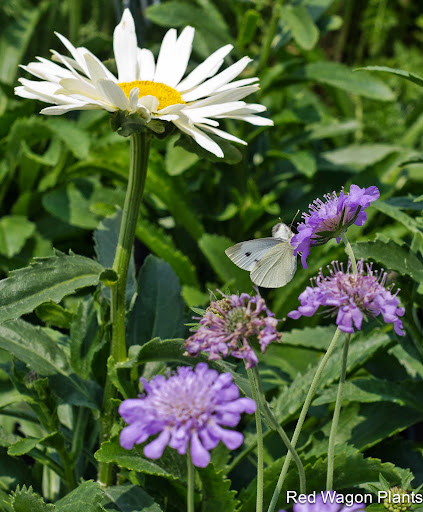
Moth and Scabiosa

'Raspberry Swirl' Dianthus
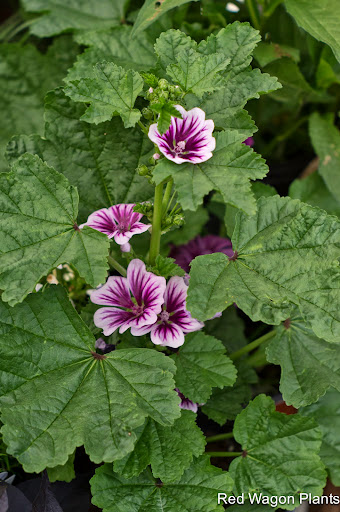
Malva 'Zebrina'
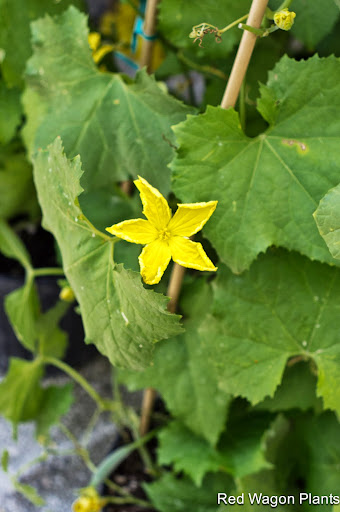
Luffa flower!
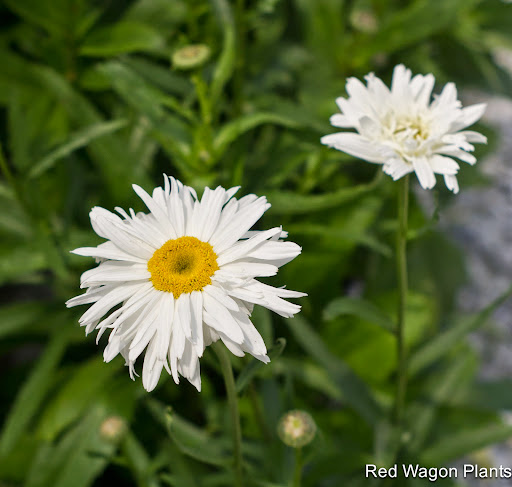
'Crazy Daisy' Leucanthemum

'Apricot Sparkles' Daylily
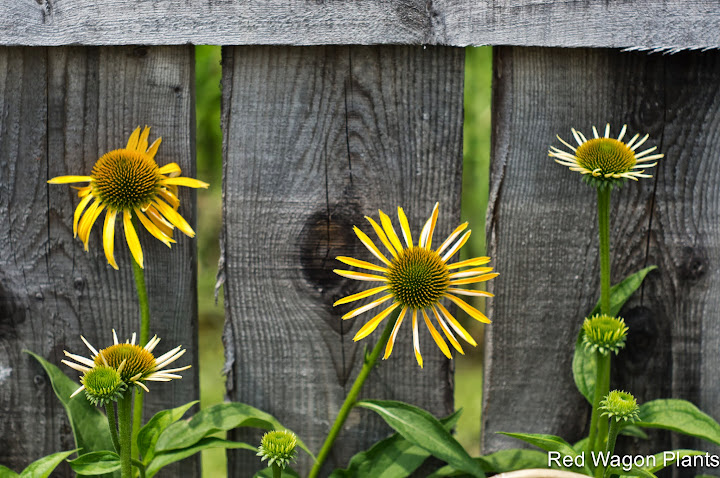
'Harvest Moon' Echinacea
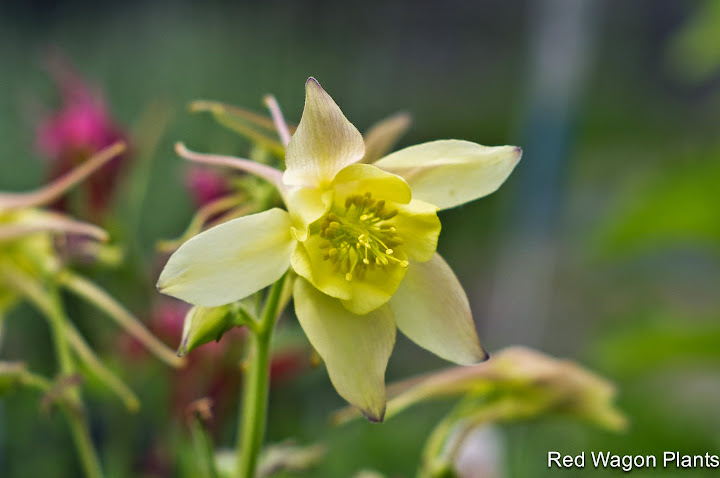
'Origami Yellow' Columbine
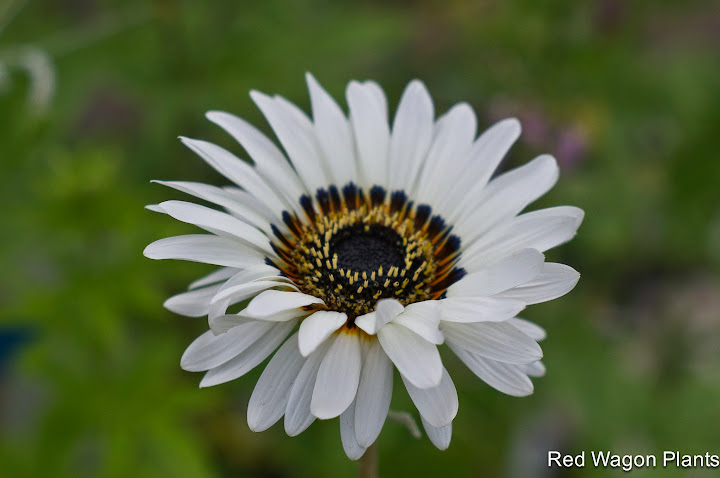
'Zulu Prince' Cape Daisy
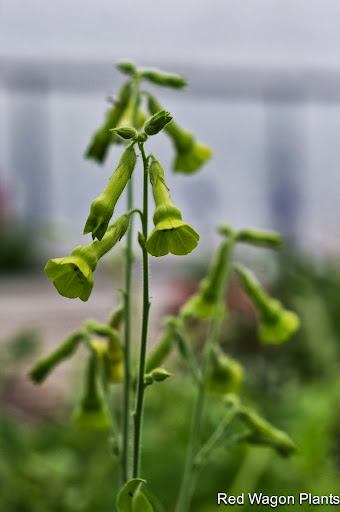
Nicotiana langsdorfii

We decided that gardeners should wear their strong arms with pride!
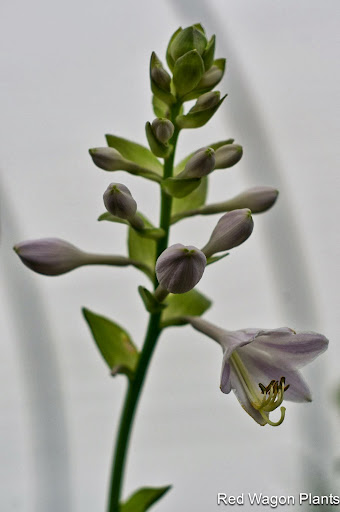
Hosta in bloom!

Dancing nasturtiums

Dr. Seuss' favorite: ageratum
~ Sophia
There is nothing quite like stepping out into the early morning of a sunny day. Everything glitters as though it were coated in diamonds, and the plants look so fresh and thirsty for the day to begin. Just as after a heavy snowstorm the shapes of the plants are exaggerated, so are they on a summer morning, when the shadows are deep enough to fall into and their texture stands out in sharp relief. Here are some images from one such morning in our garden...
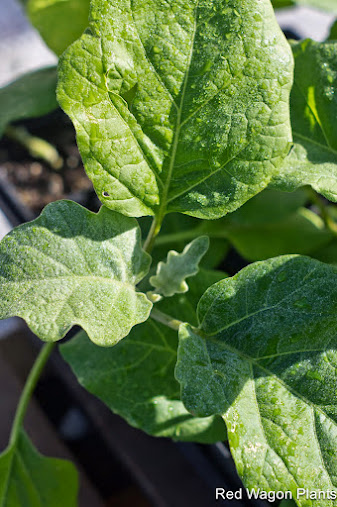
I have decided that if the vegetables were to have a beauty contest, eggplant would win.
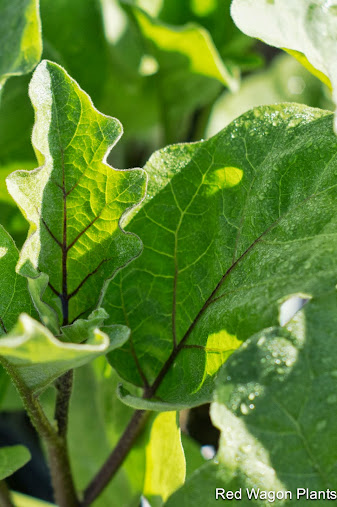
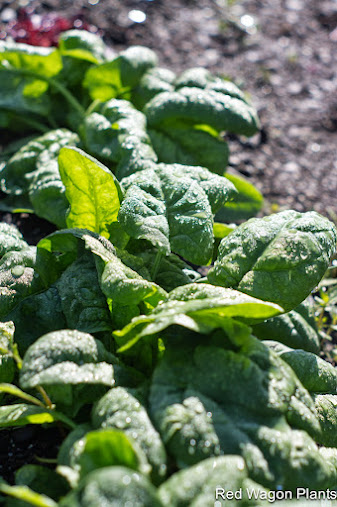
Dew on the Spinach

Lacinato Kale
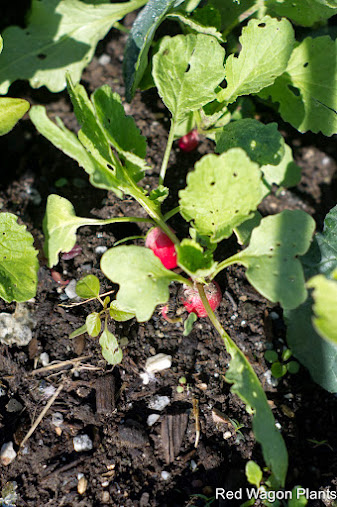
The rosy blush of French Breakfast Radishes
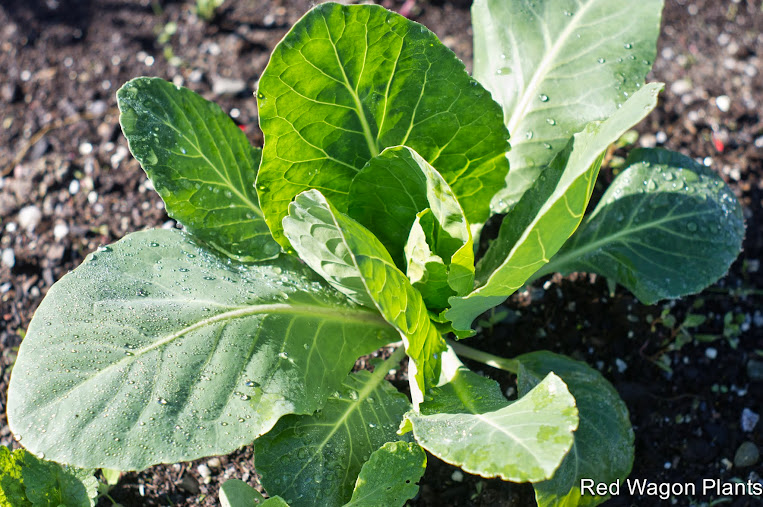
Cabbage

Chicory standing at attention

Red cabbage seedlings

Your source for little known herbs! This is Red Shiso, a cinnamon and clove-flavored herb often found in sushi
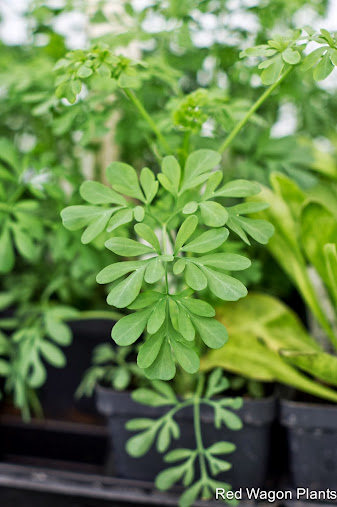
Rue, the "herb of grace"

Valerian, the herbal medicine chest

White Sage, a plant that grows wild in California and is tied up into smudge sticks
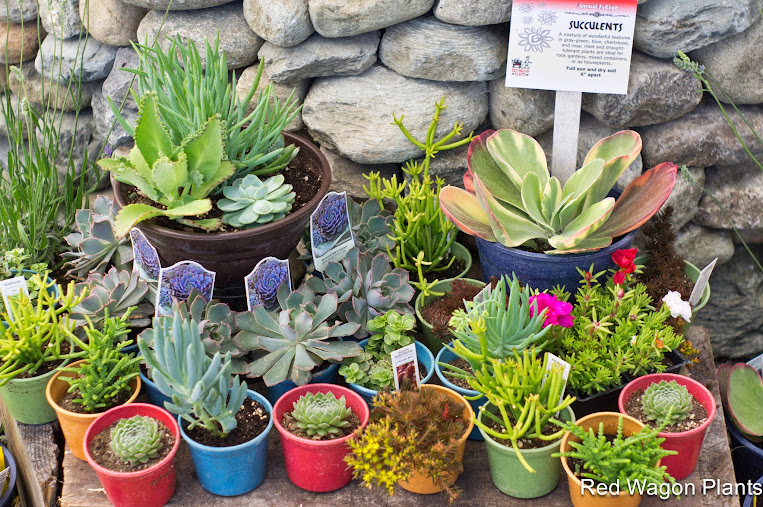
These cute succulents make great patio and houseplants
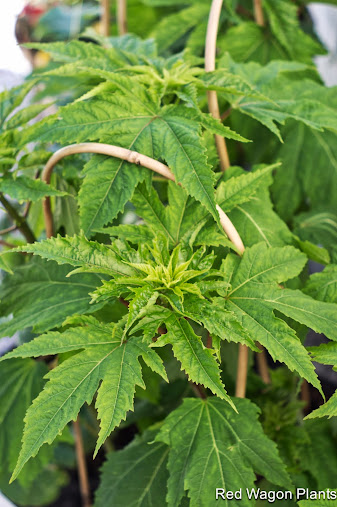
This year we have some really beautiful perennials, like hibiscus, featuring dinner plate-sized flowers

'Hot Papaya' Echinacea

'Strawberry Flair' Iris
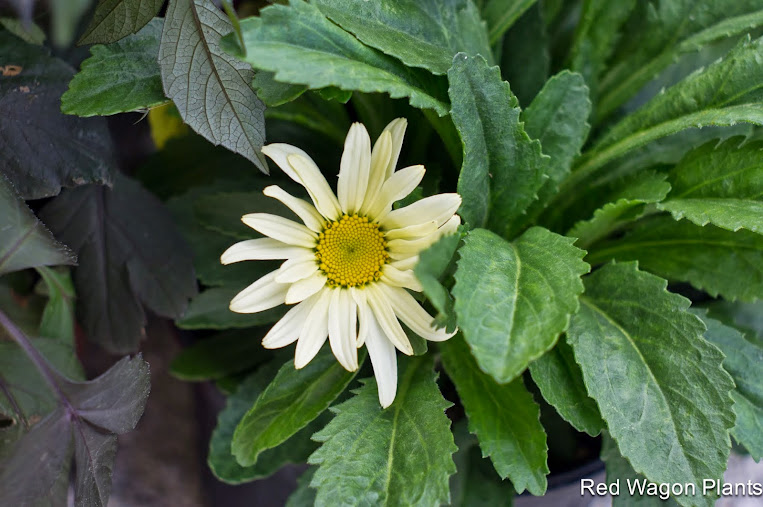
'Banana Cream' Shasta Daisy

'Raspberry Regal' Coral Bells
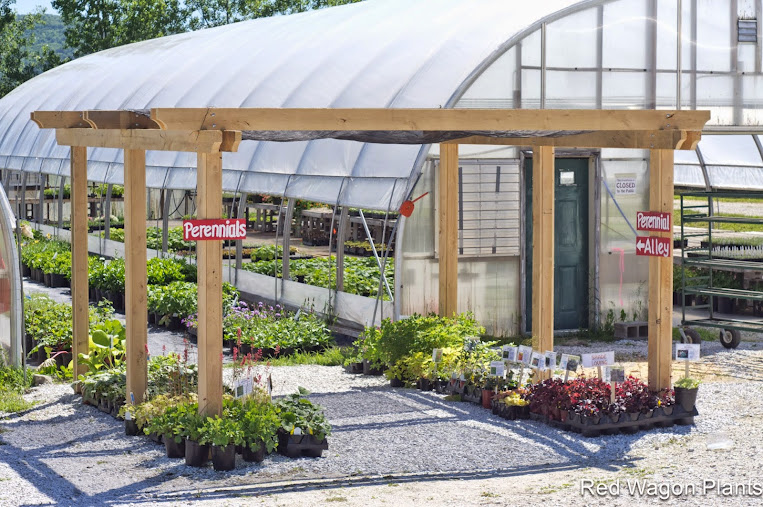
And Eric built us this beautiful shade structure to house them in!
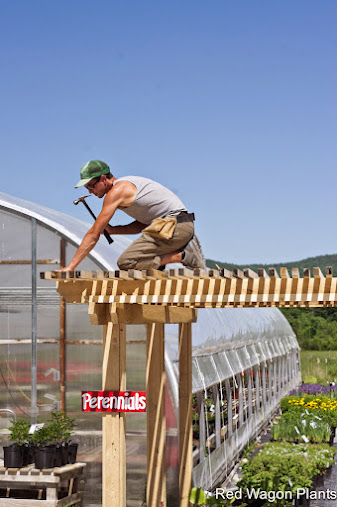
Here he is putting on the finishing touches: a slatted roof!

One of our insect friends sampling the Saponaria and Korean Lilac
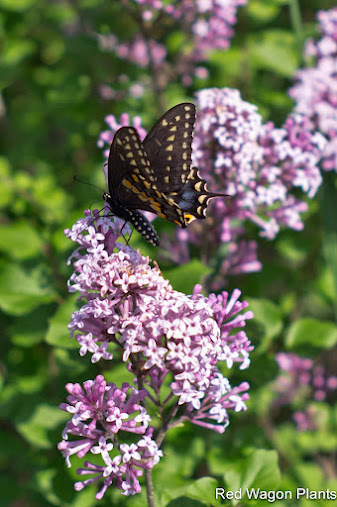
~ Sophia
One of our friends came into the greenhouse today and said to me, "Well! The retail house is like a hive of industrious bees!" We are blessed by a hard-working, talented and productive crew that come to work smiling, rain or shine to bring healthy plants out into the world. But more than that, I've been realizing, we come to work to connect, to talk and share our stories, to laugh and feel a part of a community. And what a community we have! When hundreds of plants and the people that care about them come together, something amazing happens - neighbors who have never met before become friends, old and young teach and help one another, and children receive their first few seeds of plant knowledge. It seems that among the many important roles of plants (like turning CO2 into oxygen and feeding us) they also act as glue for our community, cementing it and making it strong.
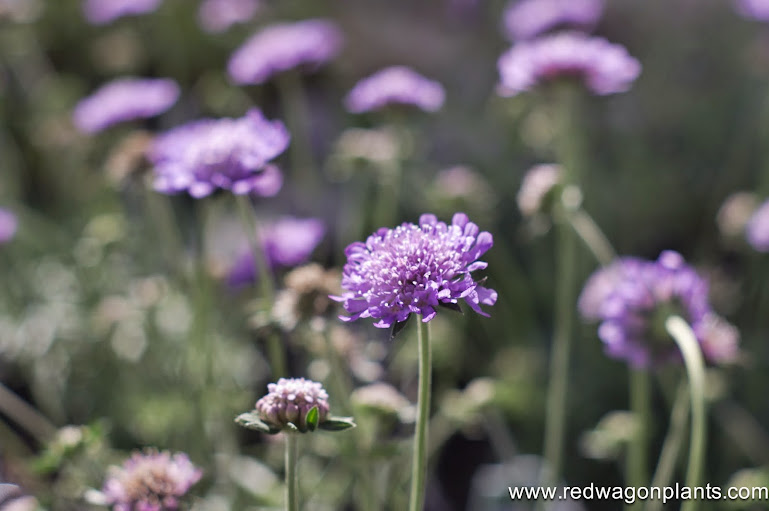






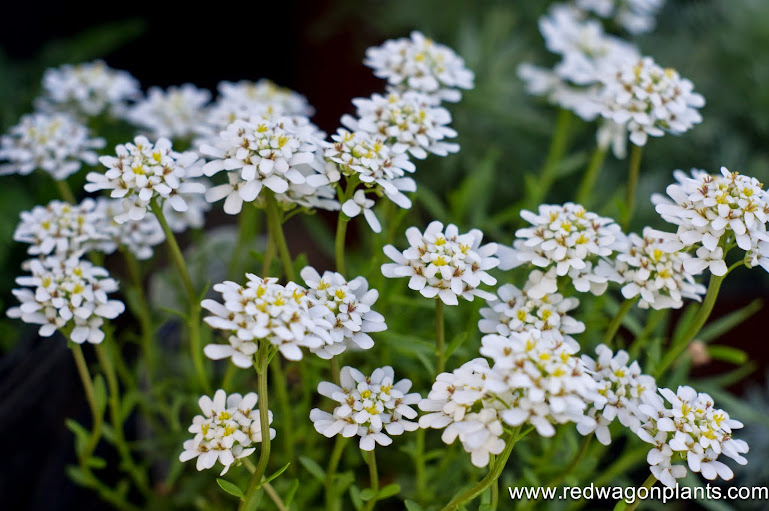





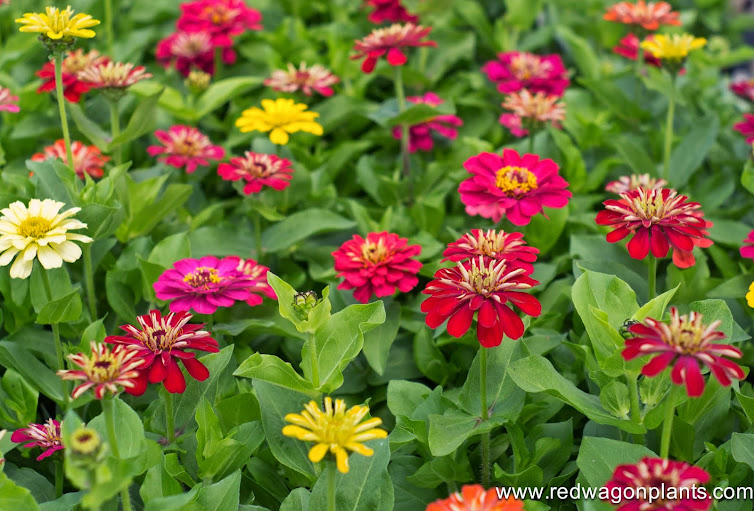

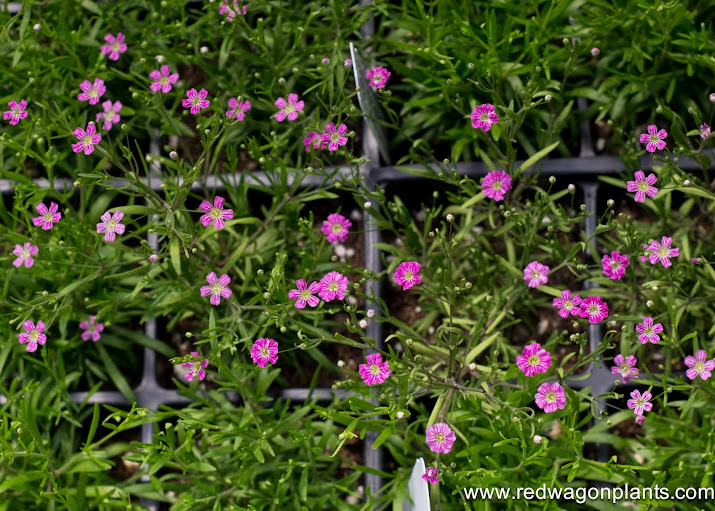




Hooray for warm weather and sunshine!
Happy gardening,
Sophia

With all this sun shining lately, the plants couldn't be happier! Everything is blooming like crazy, the trees are leafing out a mile a minute, and the greenhouses are a flurry of activity. With so much going on, we have to remind ourselves to stop and smell the flowers, breathe in the spring air, and get our hands dirty in the garden. Here are a few snapshots from the last week at Red Wagon...



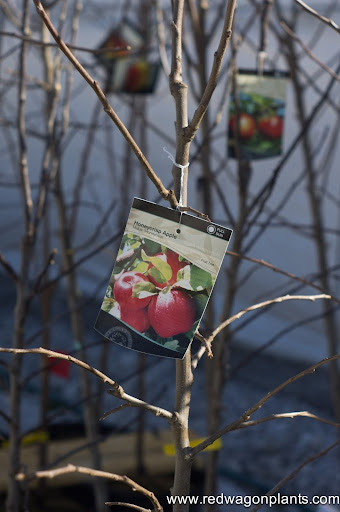
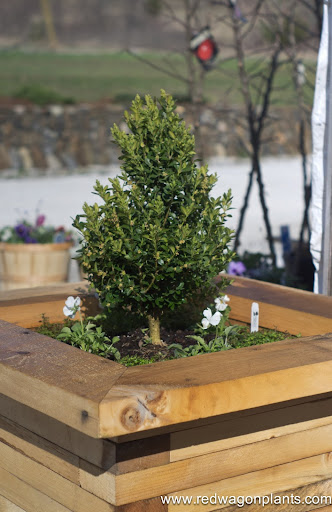




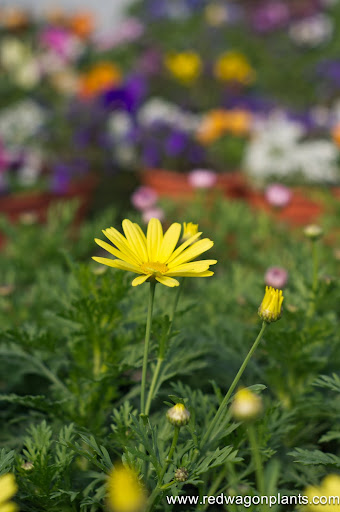



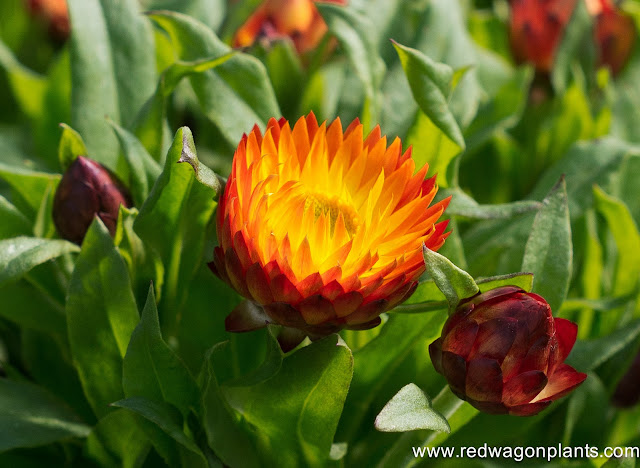




What's blooming in your garden?
~ Sophia

There is so much beauty in our greenhouses right now! One of the things that always strikes people when they walk in is the smell of thousands of flowers. It's so sweet and fresh, truly a wonderful sensation. And a photographer's paradise! Here are some of the unique offerings gracing our greenhouses before they go out into the world...
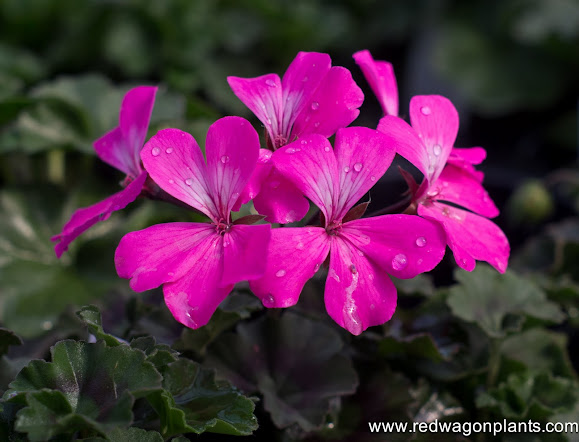
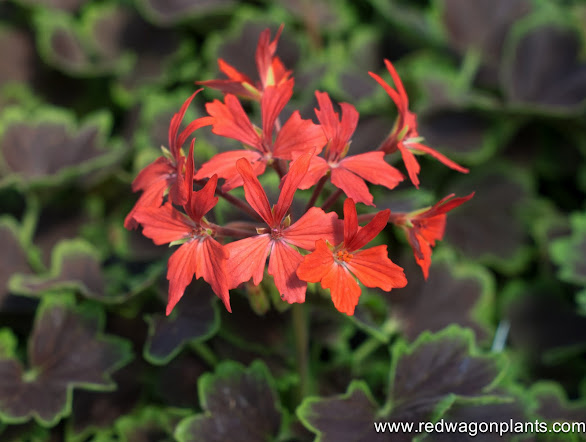











Happy Gardening!
~ Sophia

We are so grateful to everyone who came out last weekend to enjoy the flowers, sunshine and fresh air inside our greenhouses. It was one of those glorious days that gave us confidence in the return of spring and reminded us how much everyone (not just us) is looking forward to it! In case you missed it, here are a few glimpses from our moment in the sun...
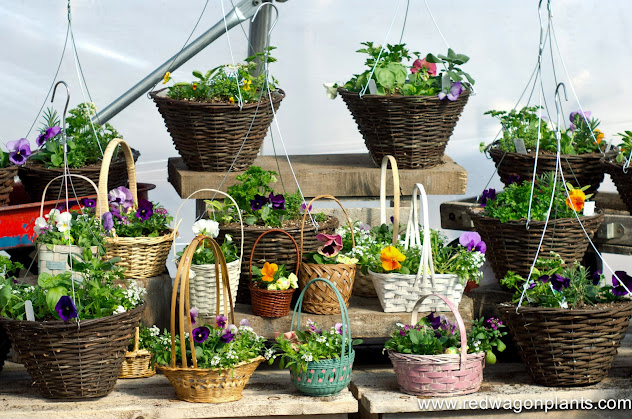












There's more to come! Opening day (April 19th) is right around the corner....
~ Sophia
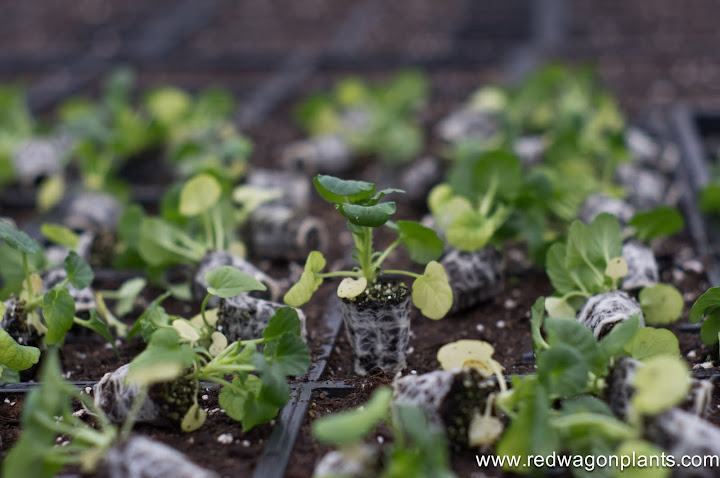
Hurrah! It's that time of year again and we're back in the greenhouses getting our hands dirty. And even though the air is filled with snowflakes outside, we'll let you in on our little secret - spring is just around the corner! Here are some of the first plants we're potting up in our cozy greenhouses.












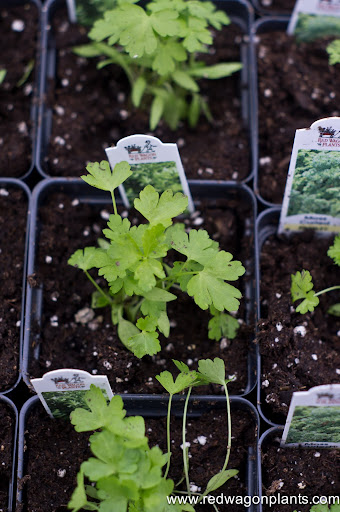
Join us for some early plants, refreshments, and to wander our sunny greenhouses at our Open House on March 30th!
~ Sophia






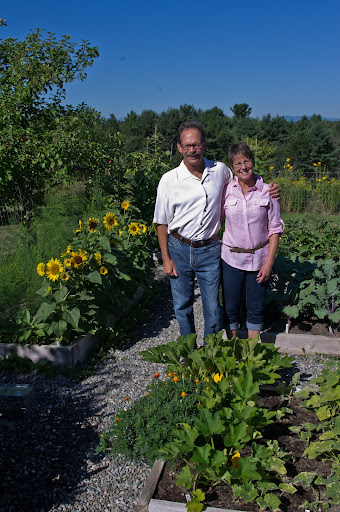
Sophia and Lily visited Lori and Doug's garden this week to take some pictures and get an update on how all those plants are doing in their new raised beds. The garden looks beautiful, and Lori and Doug, gracious as ever, are so pleased with their abundant harvests. A few lessons have been learned along the way in this garden's history, which you can read about here and here.
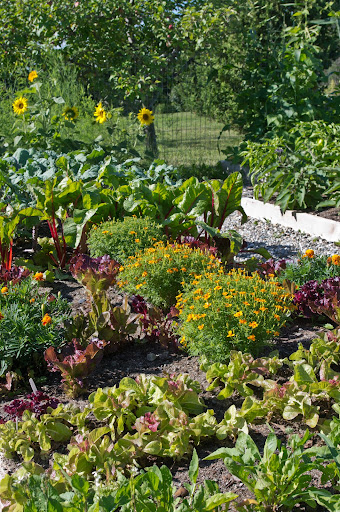
The garden is a great example of how colorful and varied a vegetable garden can be. Here an array of lettuces, marigolds, chard and kales co-mingle to create a carpet of textures, colors, and flavors. This is a perfect example of how edible gardens are also ornamental and can be featured in the center of a landscape.
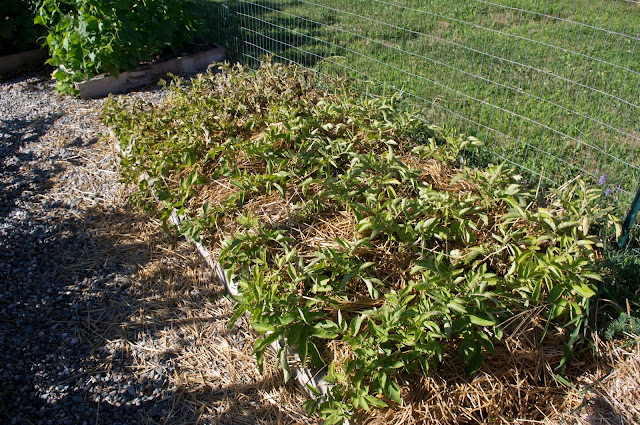
Doug and Lori did a tight spacing on their potatoes at planting time, so they decided to hill with straw since there was not enough room to hill the sides of the plants with soil. This should lead to good yields, helps retain moisture and keeps disease pressure down.

They carefully stripped the plants of blossoms in the spring and are awaiting next year's harvest. By taking off the blossoms in the first year, Lori and Doug were able to help the plants concentrate their efforts on producing the lush green growth you see in the picture. A raised bed is a great way to go with strawberries - it keeps the plants under control so that they do not spread into neighboring plants, the strawberry plants have better air circulation (therefore less disease) and it keeps the berries clean.

On a recent trip to Tuscany, Lori and Doug spied this trellising system and were able to re-create it at home. Anytime tomato plants are trellised from above, they will grow strong, tall and the fruit will be blemish free. This is the method used by greenhouse growers and in field production on small farms that really care about quality.
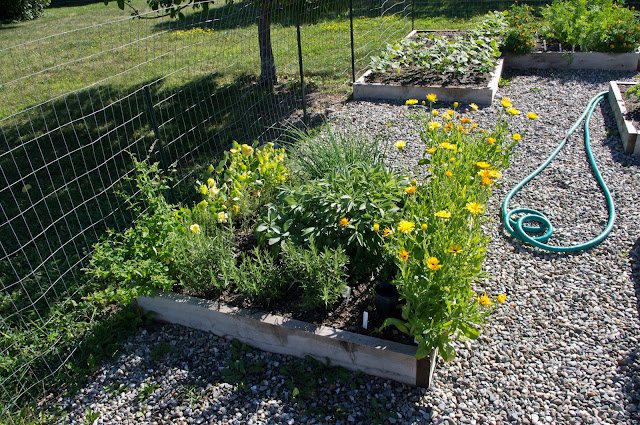
This small 4' x 4' bed provides plenty of space for herbs used daily in the kitchen as well as a few edible blossoms such as calendula. Lori makes a fantastic herb salt by very finely chopping sage or rosemary and mixing it with a good quality sea salt. This herb blend is great on hard boiled eggs, fish, salads, grilled meats.....pretty much anything you can think of. I felt pretty lucky when I was given a jar and have been carefully parsing it out ever since. It is also a great way to preserve herbs for winter use since the salt acts as a natural preservative.
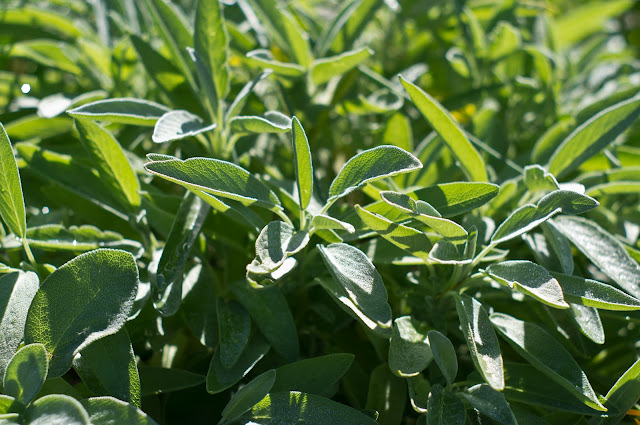
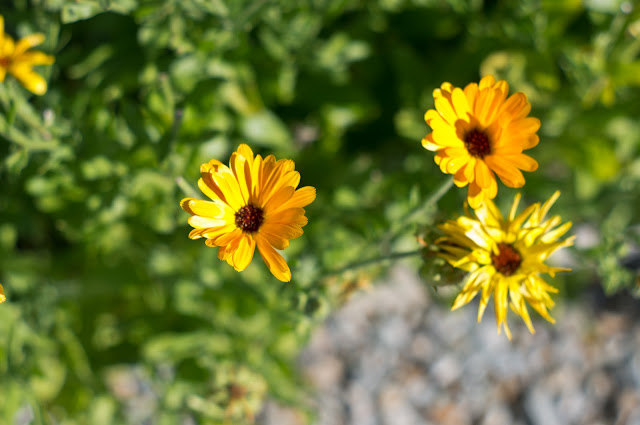

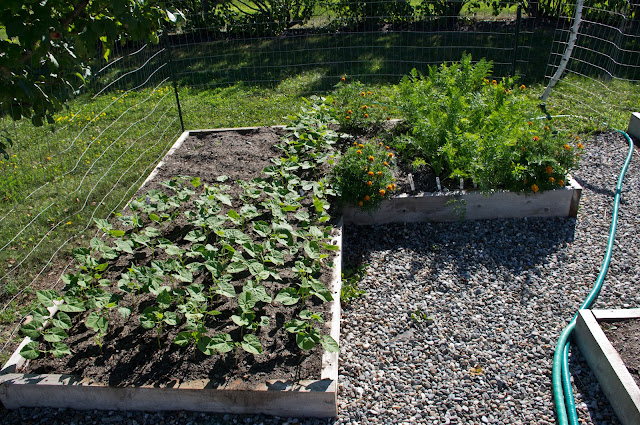
Spaces were cleared out as crops were harvested which meant that new plantings had plenty of room to grow. The space in the back corner is being reserved for another fall planting. Lori just called today saying that she is ready to do a round of fall crops - this will include lettuces, greens, cabbage, and some cold hard herbs such as parsley, cilantro, dill. It is always a good idea to clean up gardens regularly so that old or sickly plants don't take up space that could be used for new, fresh plantings.

We just love the mixed beet plantings....the mixture of golden, cylindrical and regular beets makes for great salads.

These broccoli side shoots will keep producing into early winter. We only select varieties that produce lots of side shoots. Often one four pack is plenty to keep a small family in broccoli all summer, fall and early winter.
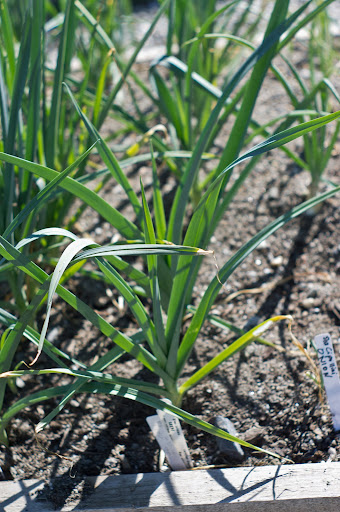

These peppers are great for stuffing. They have a wide, flat bottom and a large, hollow cavity. An herbed rice or a curried couscous is a lovely thing to pair with these beauties.

These are huge and lovely, and making me a bit jealous since the ones in my garden are small and not very happy.





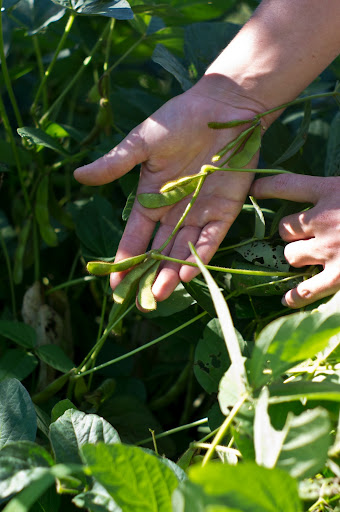

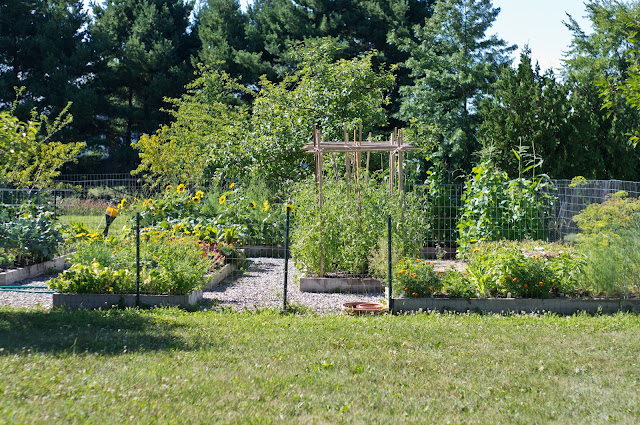










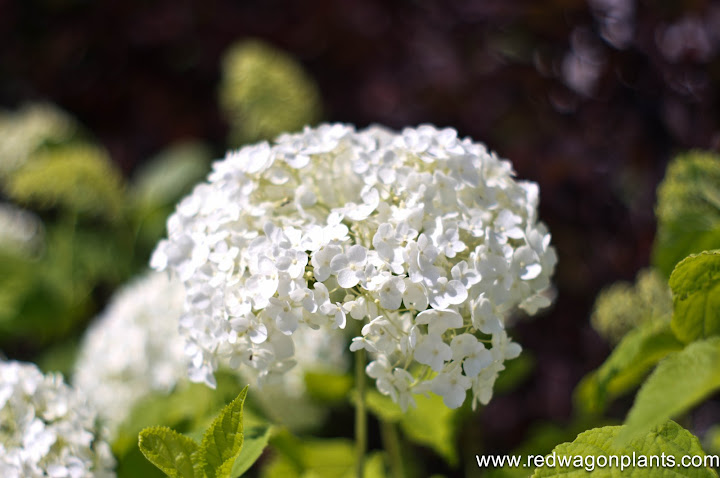




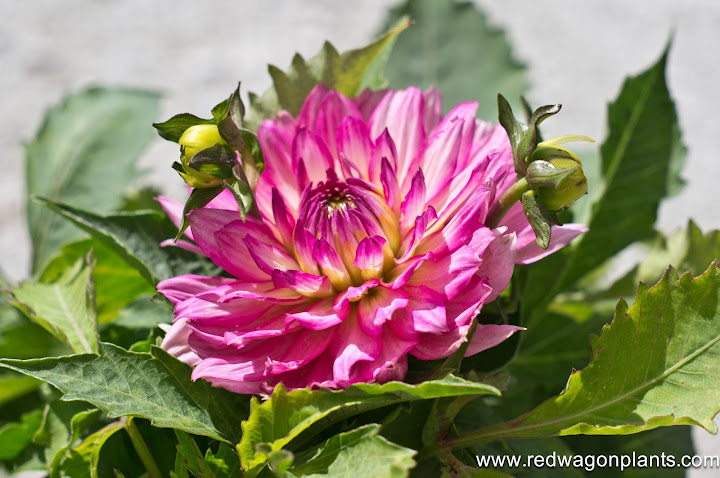













There's been no shortage of excitement this week! The sweet potato slip sale was a great success (and we still have some left, if you missed out). Saturday was extra amazing because of the delicious treats whipped up by Jessica Bongard of Sweet Lime Cooking Studio...seriously, this girl rocks, and if you haven't checked out her cooking classes, you should! We're also having a sale: hanging baskets are buy one, get one 50% off, and shade perennials are buy one, get one free. So come get 'em before they're gone!

All this fine weather and summer rain are making our plants grow like crazy! Just want to share some of the glorious colors and textures coming out of our greenhouses right now...